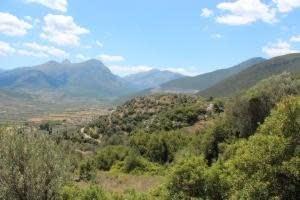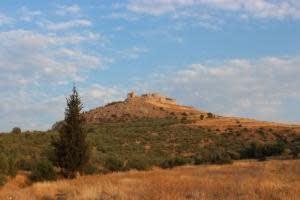The Western Argolid Regional Project (WARP) is an interdisciplinary archaeological project that seeks to understand the nature of human activity in the western Argolid (southern Greece) in all periods of prehistory and history. More specifically, there are three research objectives that guide the project. The first is to document the settlement history of the western Argolid by identifying the remains of various loci of activity in the landscape, from permanent settlements to farms and fortifications. The second is to understand the historical development of various forms of political authority in the study area, and the local responses to these authorities. The third is to trace the various relationships and networks that connected the communities of study area to communities located in other regions of southern Greece.
Our methodology is interdisciplinary, and includes archaeology, history, ethnography, and geology. Our primary method is an intensive pedestrian survey of our 30 square kilometer study area. This method, now well-established in Greek archaeology, consists of systematically walking over the landscape, noting and collecting evidence for past activity. This evidence is then analyzed in order to make inferences about the location, chronology, intensity, and nature of human activities. In Greece, fieldwalkers primarily collect fragments of pottery and other artifacts such as stone tools and coins, and document immobile features, such as fortification walls and abandoned houses. The artifacts and features are then identified and classified by experts. All the data are entered into a database linked to a Geographical Information System (GIS), allowing researchers to easily display and analyze the data spatially. Geology and geomorphology play an important role in the survey, by identifying the processes whereby soils were formed and the effects that these processes had on the distribution of artifacts. For historical periods, written documents complement the results of the archaeological survey. In addition to references to the study area in historical and literary sources, a number of administrative documents (Venetian, Ottoman, modern Greek) refer directly to the western Argolid and these will be analyzed by the project. Finally, ethnography will help the project to interpret the modern landscape; an ethnographer will interview local inhabitants about the past century of activity in the western Argolid.
We anticipate that our work will make significant and wide-ranging contributions to Greek archaeology and history. Although Argos is an important city in virtually all periods of ancient and modern Greece, its hinterland is barely understood. Likewise its connection to other major centers in southern Greece is poorly understood. The western Argolid, being the region most conducive to archaeological survey within the territory of Argos, will allow us to shed light on its relationships to its hinterland. This work will have a broad impact because Argos plays a central role in scholarly discourses. For instance, it is important to the study of the emergence of the Classical city-state (Greek polis). The Greek city-state consisted of an urban center and its hinterland, and the intense and dynamic relationship between the two is central to understanding any ancient Greek city’s history. These city-states did not exist in isolation, however, and understanding their relationship to other states is equally important. Literary sources tell us that parts of the western Argolid were occasionally independent from Argos, and that it lay on a major thoroughfare of overland traffic. Thus WARP will make a significant contribution to our knowledge of the interregional networks that connected the various communities of southern Greece.

